.png)
Living in an apartment with limited space doesn’t mean you have to give up your dream of having a lush green garden.
In fact, vertical gardening with hanging planters is one of the smartest (and most beautiful!) solutions for Indian homes, balconies, and even kitchen windows.
Whether you’re a first-time gardener, a student trying to green up your rental, an urban homemaker looking to beautify your balcony, or someone who simply loves plants, this step-by-step guide is crafted just for you.
Let’s learn how to create your own vertical garden using hanging planters and vertical plant stands, with product recommendations from Urban Plant and other India-based solutions.
Why Choose Hanging Planters for Small Indian Homes?
In Indian cities like Mumbai, Delhi, or Bangalore, space is a luxury. Here’s why hanging planters are your best bet:
- Space-Saving: Utilize vertical walls, balcony grills, or ceilings.
- Easy to Manage: No bending or digging like in traditional gardening.
- Budget-Friendly: DIY options or affordable planters from Indian brands.
- Adds Natural Beauty: Greenery instantly uplifts your living space.
- Improves Air Quality: Ideal for improving indoor environments.
Hanging planters are perfect for balconies, patios, kitchen windows, and even indoor walls.
Explore our curated Pot & Planters Collection at Urban Plant for ready-to-use options that match Indian balcony sizes.
Step 1: Plan Your Vertical Garden
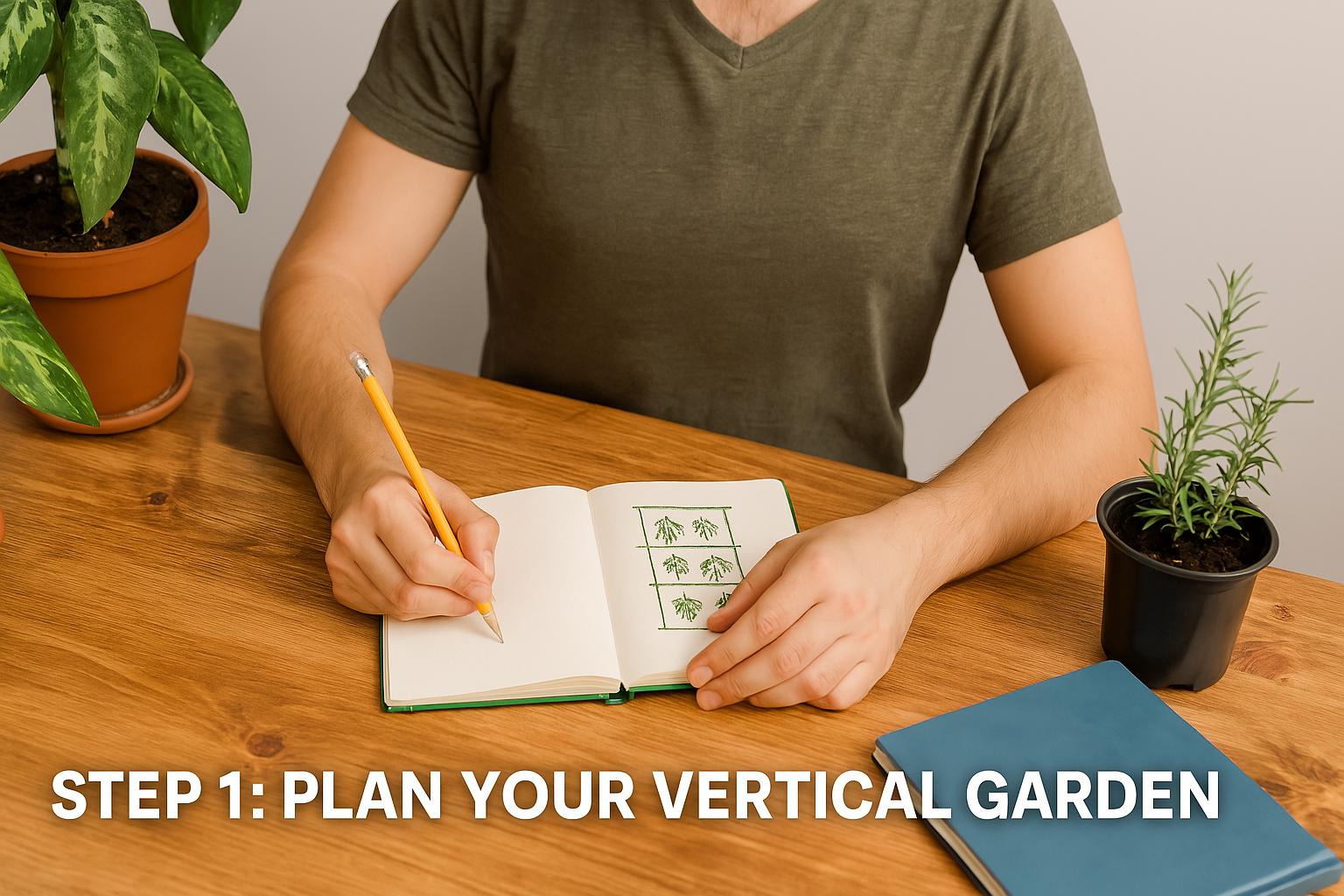
Before hanging your first planter, take a moment to plan it right. This makes a big difference in how successful and low-maintenance your garden becomes.
A: Choose the Right Location
- Balcony Grill: Ideal for rail planters or vertical racks.
- Indoor Wall: Perfect for decorative wall-mounted pots.
- Kitchen Window: Great for hanging herb planters.
- Bathroom or Utility: Snake plant and ferns thrive in humidity.
B: Measure & Map
- Measure vertical height and wall width.
- Plan a layout: grid, column, zig-zag, or staggered styles.
- Make sure there's room for plant growth and watering.
C: Understand Sunlight
- South/East-facing balconies get good light.
- Choose low-light plants for shady corners.
Pro Tip: Sketch your setup on paper or use a design tool to visualize placement.
Step 2: Choose the Right Hanging Planters
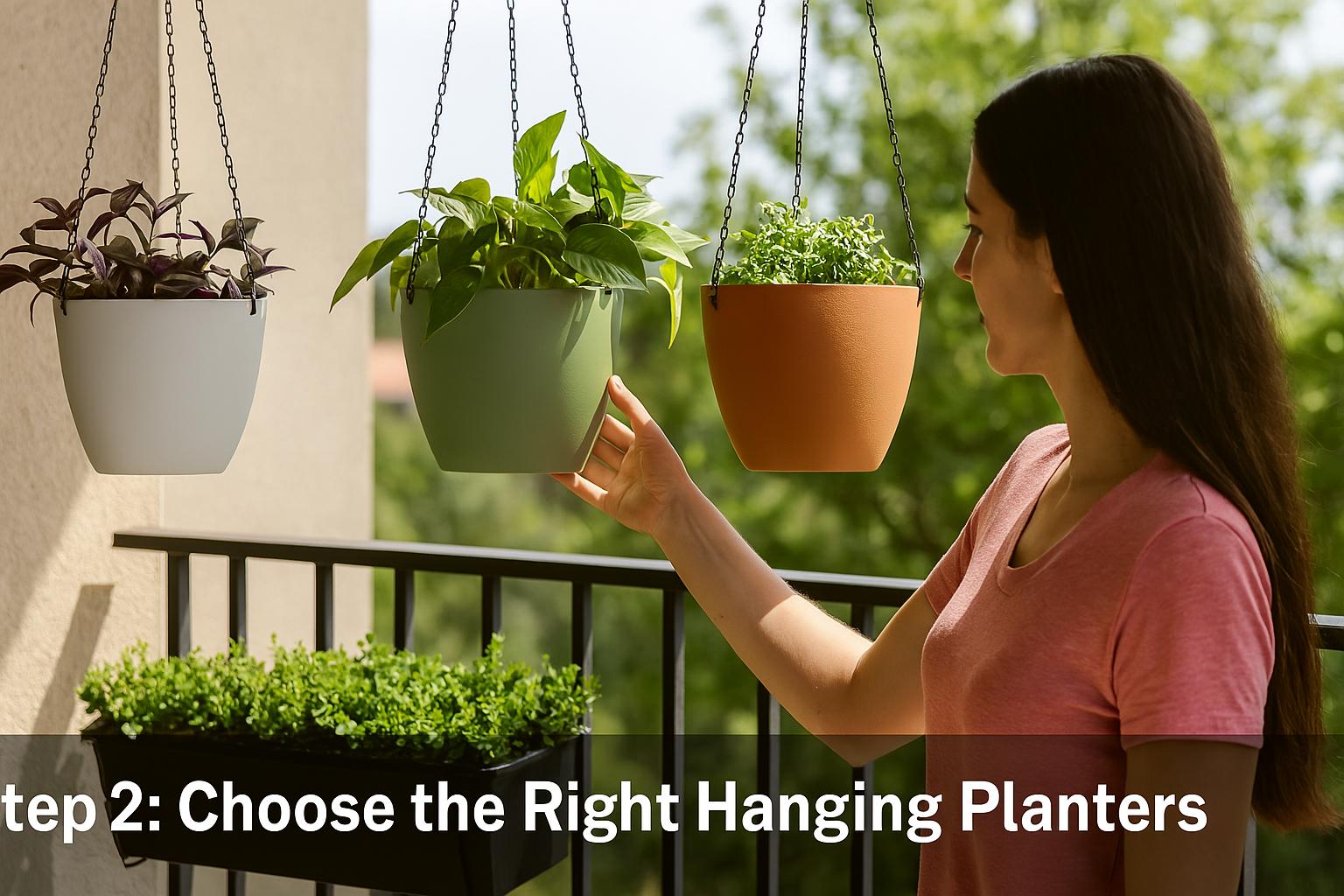
Different spaces call for different planter styles. Here are the most popular types available in India:
A. Product Types:
- Wall-Mounted Planters: Ideal for indoor walls. Try Urban Plant’s Wall Planters.
- Macramé Hangers: Great for bedrooms and balconies. Look for handmade Indian options on Urban Plant.
- Railing Planters: Perfect for balconies with metal or concrete grills.
- Vertical Stands: Space-efficient racks that hold 3-7 pots. Check out our Vertical Plant Stands.
B. Recommended Materials:
- Plastic: Lightweight and durable.
- Metal: Adds a modern touch; rust-proof options available.
- Terracotta: Breathable and traditional.
- Jute or Coir: Eco-friendly and ideal for herbs.
Pro Tip: Mix and match styles for an aesthetic look that suits your interior or exterior vibe.
Step 3: Pick the Best Plants for Vertical Gardening
Plants make or break your vertical setup. Choose plants based on light, size, and maintenance level.
A. For Sunlight-Rich Areas:
- Money Plant (Pothos)
- Bougainvillea (for railings)
- Jade Plant
- Geraniums
B. For Low-Light Indoors:
- Snake Plant
- ZZ Plant
- Spider Plant
- Peace Lily
C. Edible Plants for Kitchens:
- Tulsi (Holy Basil)
- Mint (Pudina)
- Coriander (Dhaniya)
- Green Chilies
Urban Plant also offers Plant Care Kits for better nourishment.
Step 4: Watering and Maintenance Tips

Vertical gardens are easy to maintain if done right:
- Watering: Use a watering can with a narrow spout or a pressure spray.
- Drainage: Ensure every planter has a hole or a layer of pebbles.
- Fertilizer: Use liquid or compost-based organic fertilizer every 15-20 days.
- Cleaning: Wipe leaves occasionally to remove dust.
- Rotate: Move plants around occasionally for balanced sunlight.
Bonus Resource: Read the ICAR - Indian Council of Agricultural Research guide on indoor plant maintenance.
Step 5: Try DIY Hanging Planters (On a Budget)
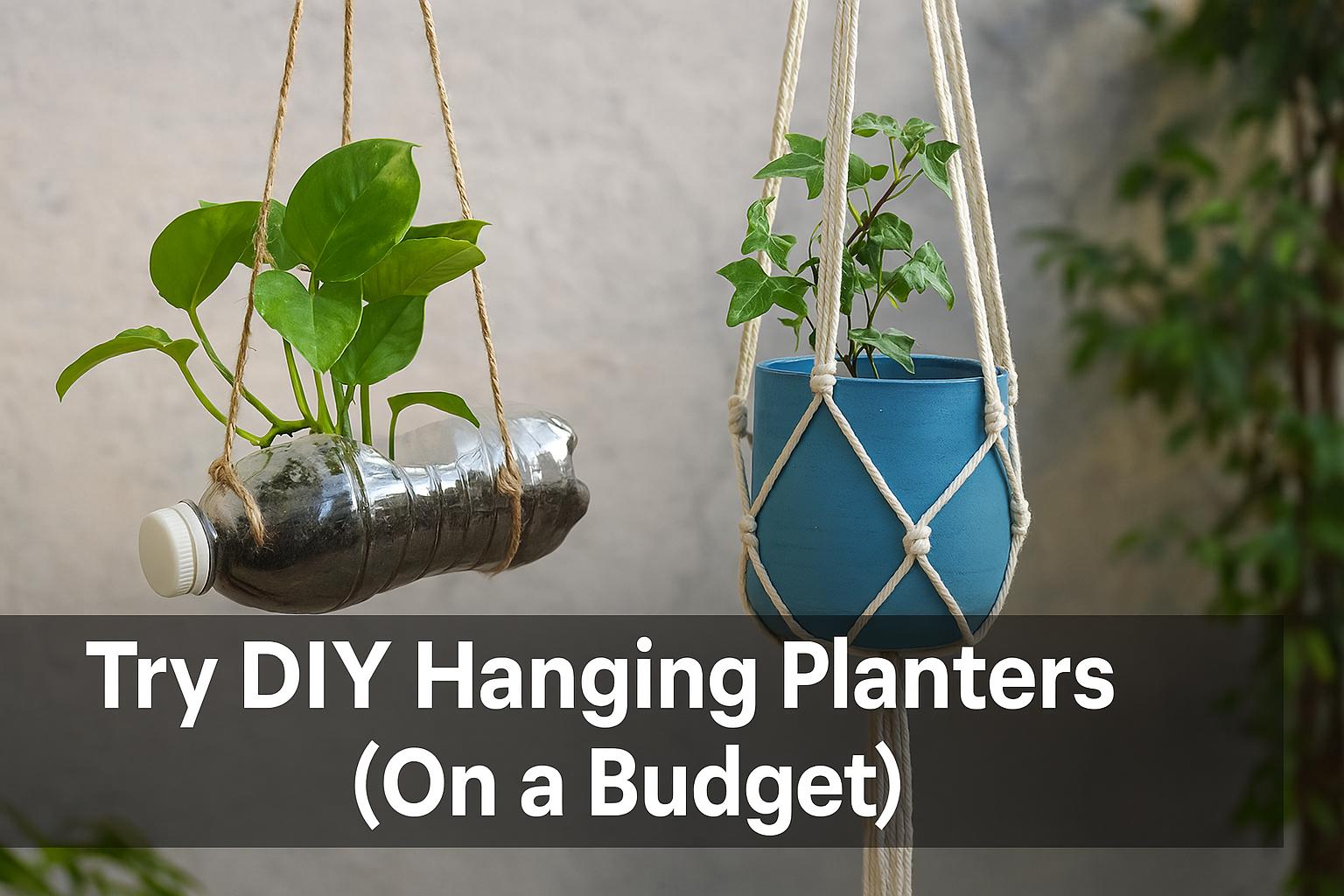
You don’t need to break the bank to go green!
Plastic Bottle Planters: Cut, decorate, and hang with twine.
Tin Cans: Paint and punch holes for hooks.
Old Saree Macramé: Reuse old fabric for a chic look.
Wooden Pallets: Use them as wall frames for multiple pots.
Step 6: Avoid These Common Vertical Gardening Mistakes
.png)
Even pros make mistakes. Here’s what to avoid:
- Using Heavy Planters on weak walls or grills.
- Overwatering without checking soil moisture.
- Planting Incompatible Plants Together.
- Ignoring Pest Management.
Use neem oil sprays (available on Urban Plant) to prevent common pests like aphids and mealybugs.
Step 7: Add a Vertical Garden Stand (For Renters & Students)
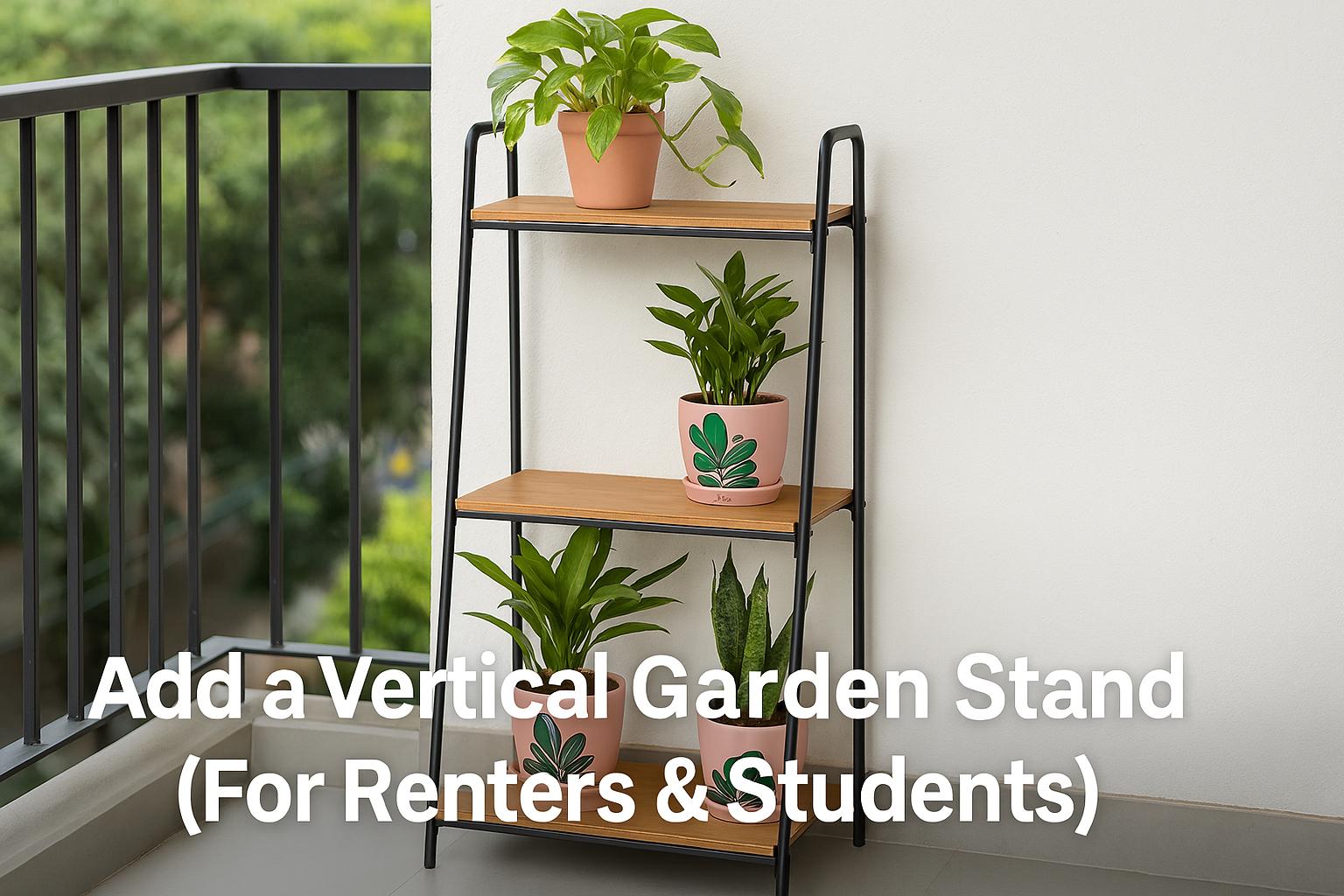
Don’t want to drill into walls? Try a vertical plant stand instead:
- Easy to move and assemble.
- Great for rental apartments.
- Comes in various sizes (2-tier, 5-tier, etc.)
- Available in metal, wood, and plastic versions.
Step 8: Get Inspired by Real Spaces
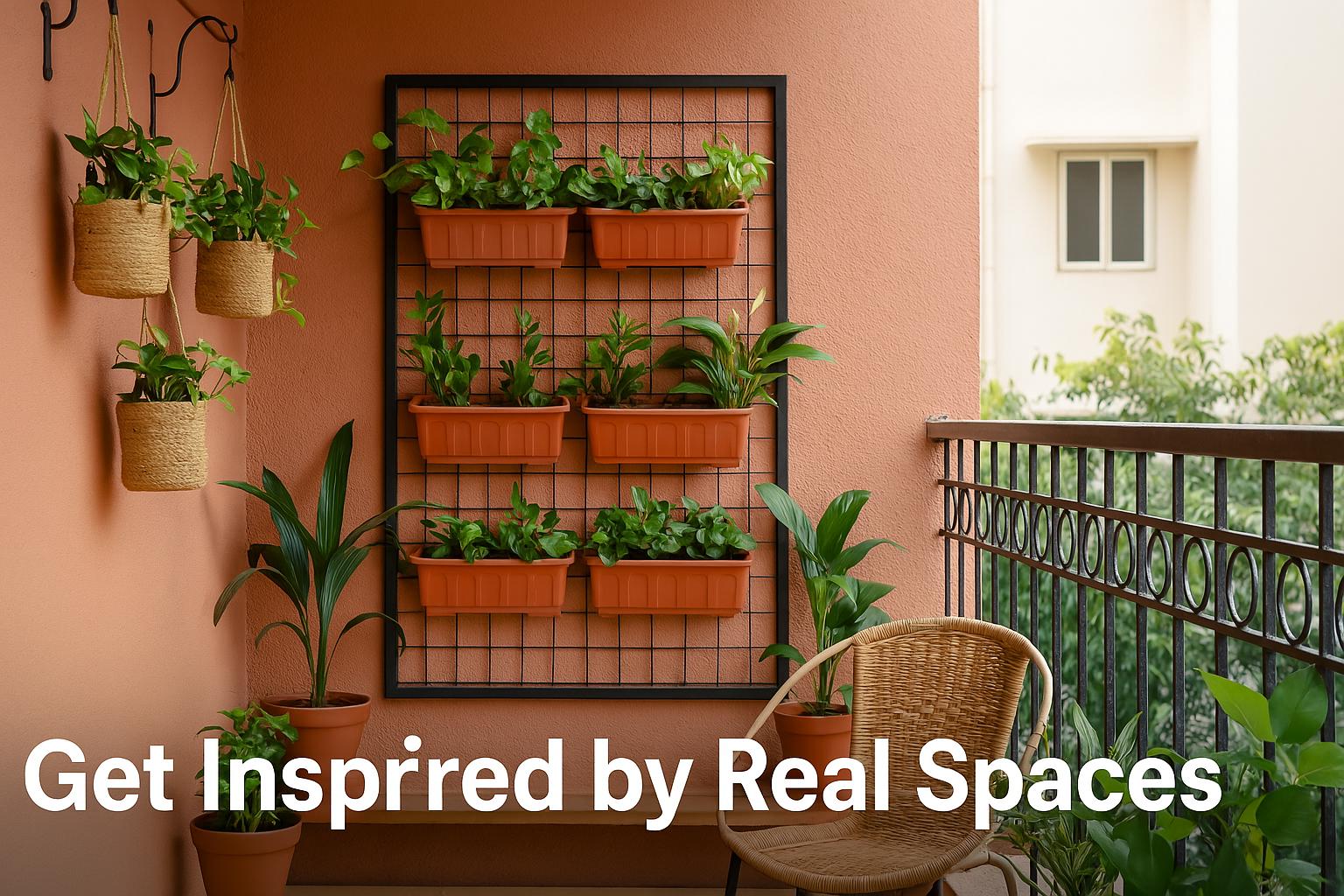
- Mumbai Flat: Railing planters with colorful petunias.
- Bangalore Studio: Macramé hangers for indoor air-purifiers.
- Delhi Kitchen: Wall-mounted herb garden.
- Hyderabad Hostel Room: Vertical rack with succulents and fairy lights.
Follow us on Instagram @UrbanPlantIndia for daily inspiration!
Step 9: Embrace Sustainable Gardening
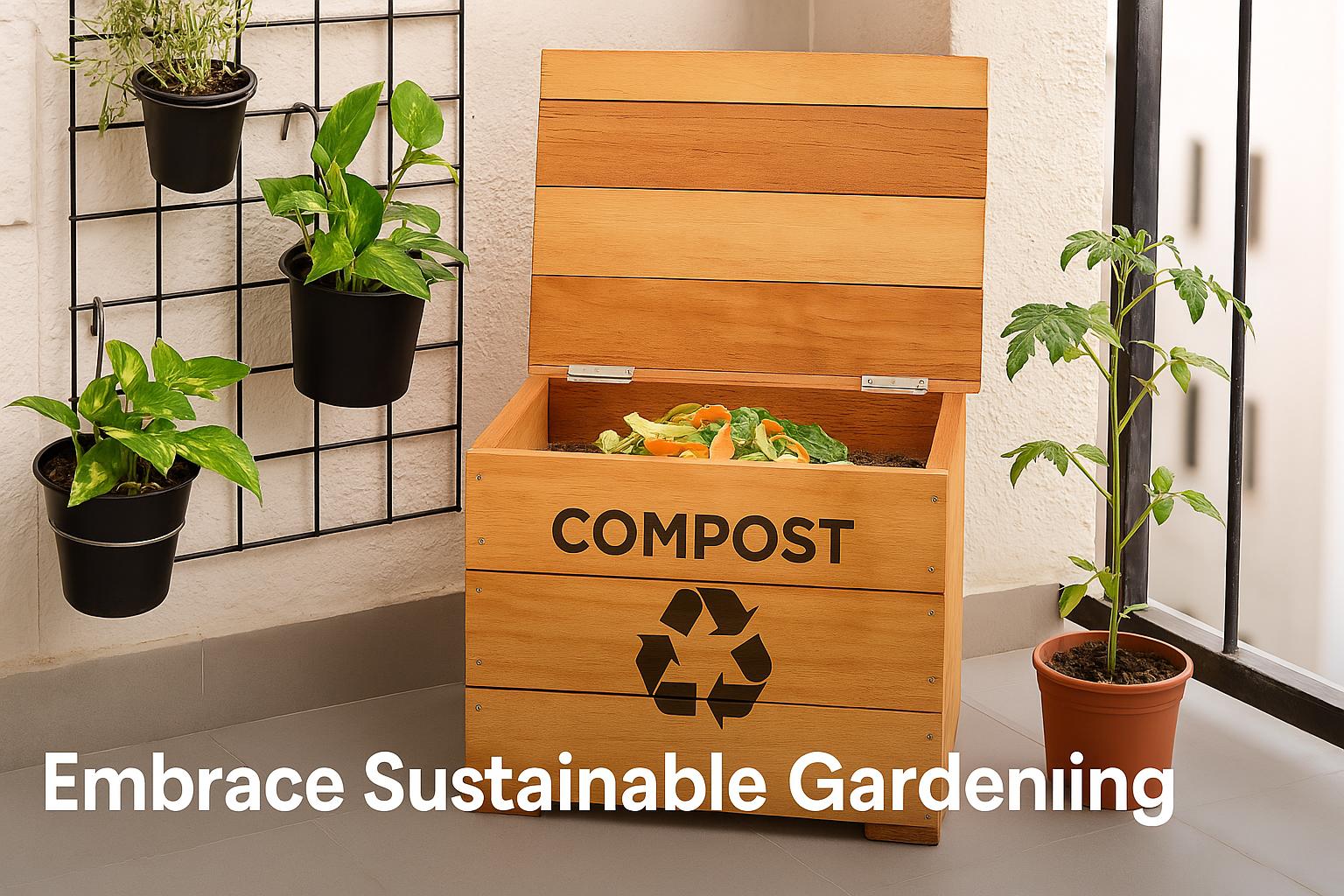
Go green the eco-friendly way:
- Use Organic Fertilizers like cow dung compost.
- Collect Rainwater in buckets.
- Compost at Home using kitchen waste.
- Repurpose Old Containers for planting.
FAQs For How To Start Vertical Gardening In India
Q1. What are the easiest plants to grow in hanging planters for Indian climates?
Answer. Money Plant, Spider Plant, Tulsi, and Mint are beginner-friendly and adapt well to Indian weather.
Q2. Can I hang planters without drilling in a rented home?
Answer. Yes! Use vertical plant stands or over-the-grill planters from Urban Plant.
Q3. How often should I water my vertical garden?
Answer. 2-3 times a week depending on sunlight and plant type. Always check soil moisture.
Q4. Where can I buy good-quality hanging planters in India?
Answer. Visit Urban Plant’s Hanging Planter Section for a wide range.
Q5. Can I grow vegetables in a vertical garden?
Answer. Yes! Cherry tomatoes, chilies, and greens like spinach can thrive in deeper pots or grow bags.
Final Thoughts: Let Your Small Space Go Big on Green
Vertical gardening is more than a trend – it’s a lifestyle choice for urban India.
With hanging planters, a little creativity, and some care, you can turn even the tiniest space into a green haven.
Whether you’re doing it for aesthetics, sustainability, or wellness, we’re here to help.
Urban Plant has everything you need to get started: planters, plant care kits, stands, and more – all designed for Indian households.




